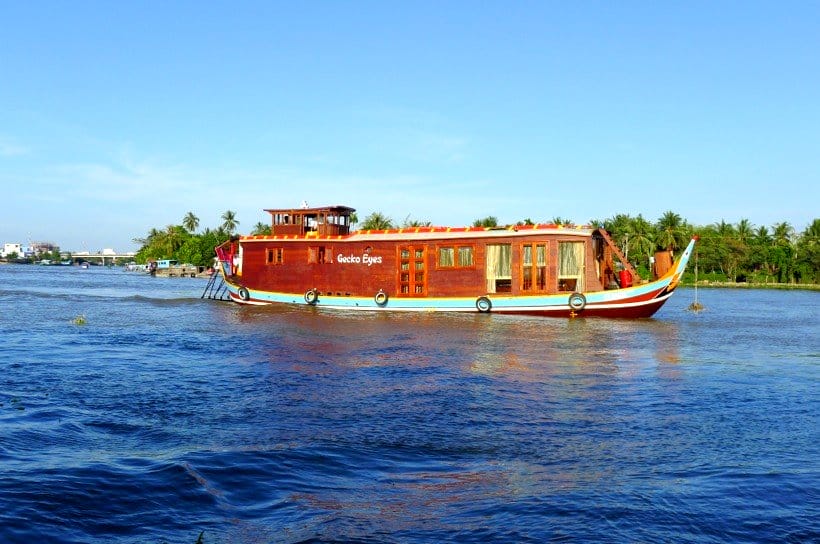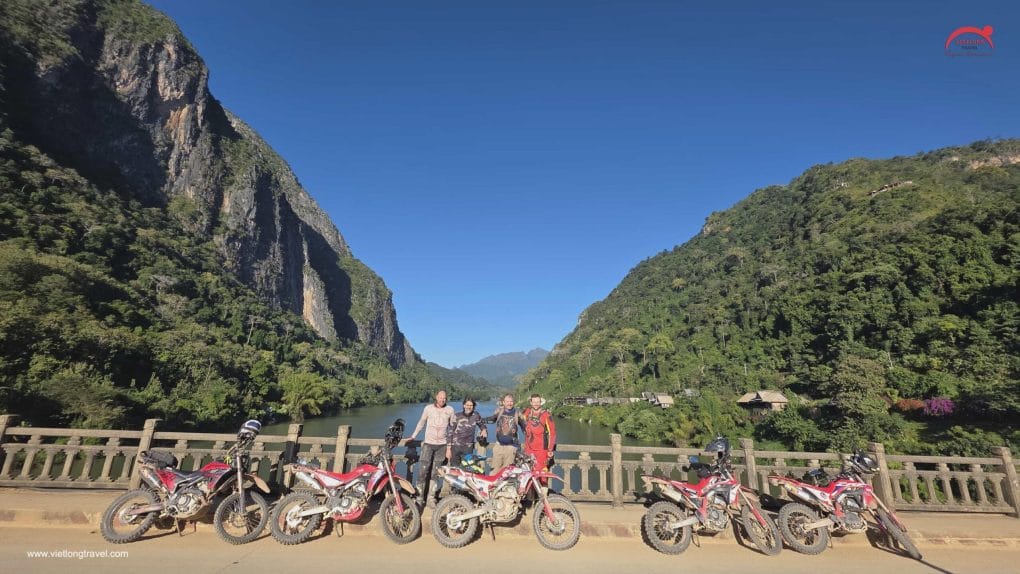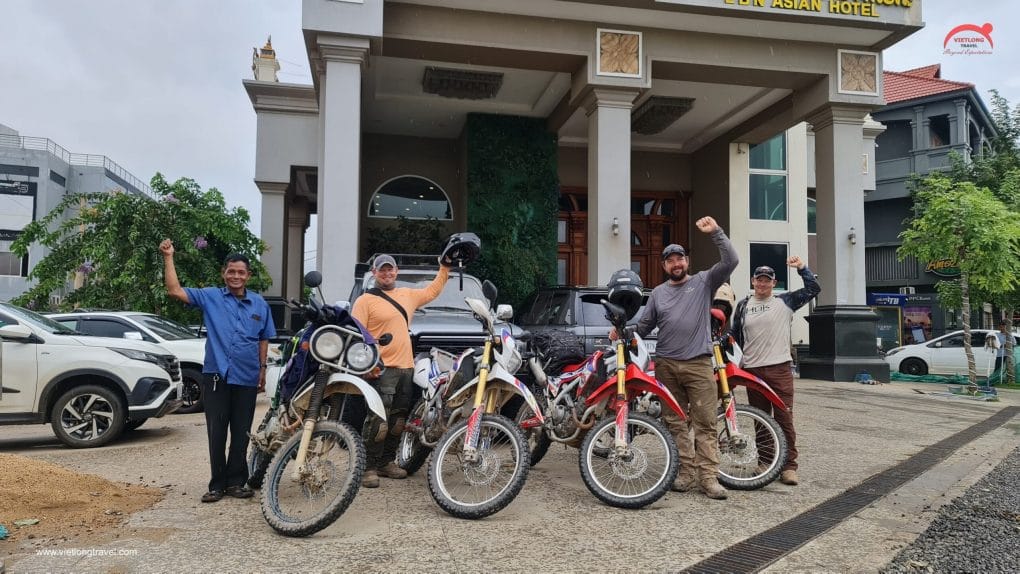Northern Vietnam is a treasure trove of traditional handicraft villages, each with its unique charm and craftsmanship. Here’s a guide to some of the most popular traditional handicraft villages in the Northern Vietnam that you definitely shouldn’t miss during your visit.
Location:
Bat Trang Pottery Village is located on the bank of the Red River, in Gia Lam District, Hanoi. As the village is only 14 kilometers away from Hanoi city center.
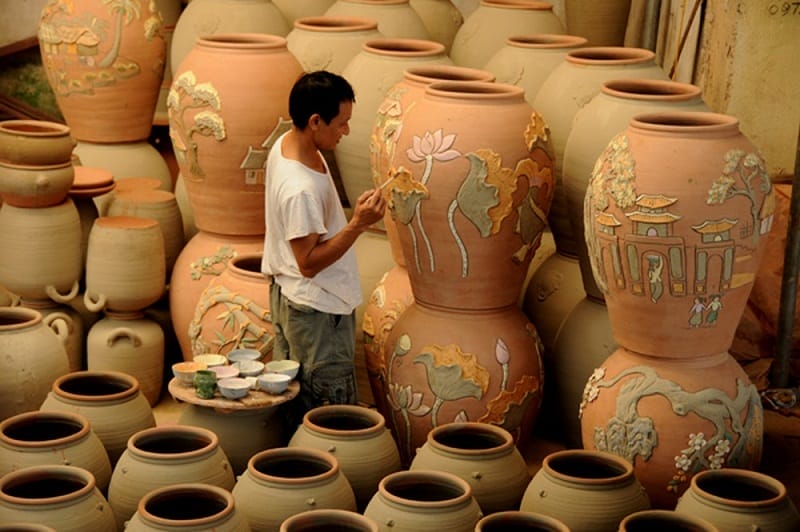
How to get there:
- By bus: Public buses are undoubtedly the most popular means of transportation because it is both cheap and convenient. You will not have to worry about the weather, also. From where you stay, look up for the most convenient way to get to Long Bien Transit Point on Tran Nhat Duat Street. From this spot, get on buses no. 47A to go to Bat Trang Ceramic Village Hanoi. The bus will drop you at the village’s gate. It takes about 30 – 40 minutes to get there by bus and only 7,000 VND/ticket.
- By motorbike: If you love exploring the streets, going by motorbike will be a better option. It takes only 20 – 30 minutes to go from Hanoi city center to Bat Trang Pottery Village by motorbike.
- After passing Long Bien Bridge or Chuong Duong Bridge, follow the road along the Red River bank and you will easily get to Bat Trang Vietnam. You can search for the route on Google Maps or simply follow the signposts along the way.
- By taxi: Another great way for your trip to Bat Trang Village is by taking a taxi. You can ask your hotel receptionist to book a taxi for you. Of course, you can book a ride by yourself.
- By shuttle bus of Bat Trang Village tours: If you book a Bat Trang Pottery Village tour with any tour operator or agency, you will no longer need to worry about transportation, as it is already included in the tour package. You will be picked up at your hotel.
Entrance Fee:
There is no entrance fee required when you visit Bat Trang Pottery Village. You only need to pay if you want to join a pottery workshop or shop around. A ceramic making session will cost you only about 50,000 VND – 200,000 VND depends on the shop. To bring your handmade item home, you will need to pay an additional 35,000 – 50,000 VND/item.
Main Products:
Bat Trang Pottery Village is renowned for its high-quality ceramics and delicate porcelain items.
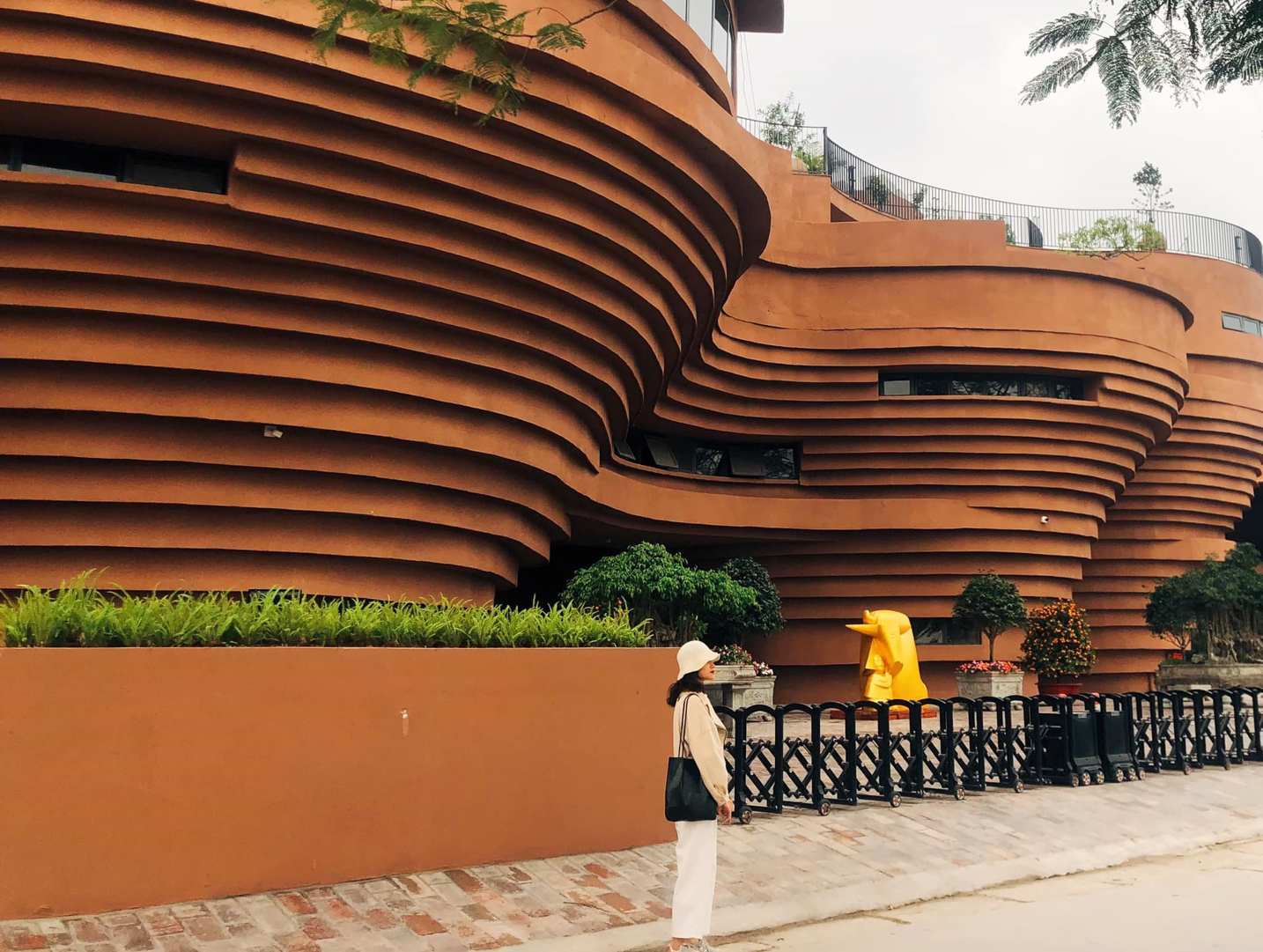
Activities:
- Explore historic pottery kilns: Take a leisurely stroll through the village and discover its famous ancient pottery kilns. These time-honored kilns, like the iconic “Lo Bau” stands as a testament to the village’s rich ceramic heritage. Dating back to the late 19th century, this ancient kiln is a century-old relic, the oldest and largest of its kind in Bat Trang.
- Engage in hands-on pottery workshops: At Bat Trang Village, you can try participating in workshops led by skilled artisans, where you can shape and mold clay into your very own ceramic masterpieces. This immersive experience allows you to appreciate the craftsmanship and dedication required to create beautiful pottery.
2. Dong Ho Painting Village:
In the past, Dong Ho paintings were commonly sold during the Lunar New Year, and people often purchased them to adorn their homes for the holiday. Over time, these paintings have evolved into cherished expressions of traditional artistic beauty, collected and displayed within homes on various occasions.
Dong Ho paintings often depict pictures of Vietnam’s daily activities such as buffalo herding, coconut picking, wrestling, and family life. Each painting carries a wish for harmony, love, prosperity, comfort, happiness, and the determination to thrive in life. Furthermore, Dong Ho art also preserves the beauty of Vietnamese cultural heritage through depictions of proverbs, anecdotes, legends, and stories.
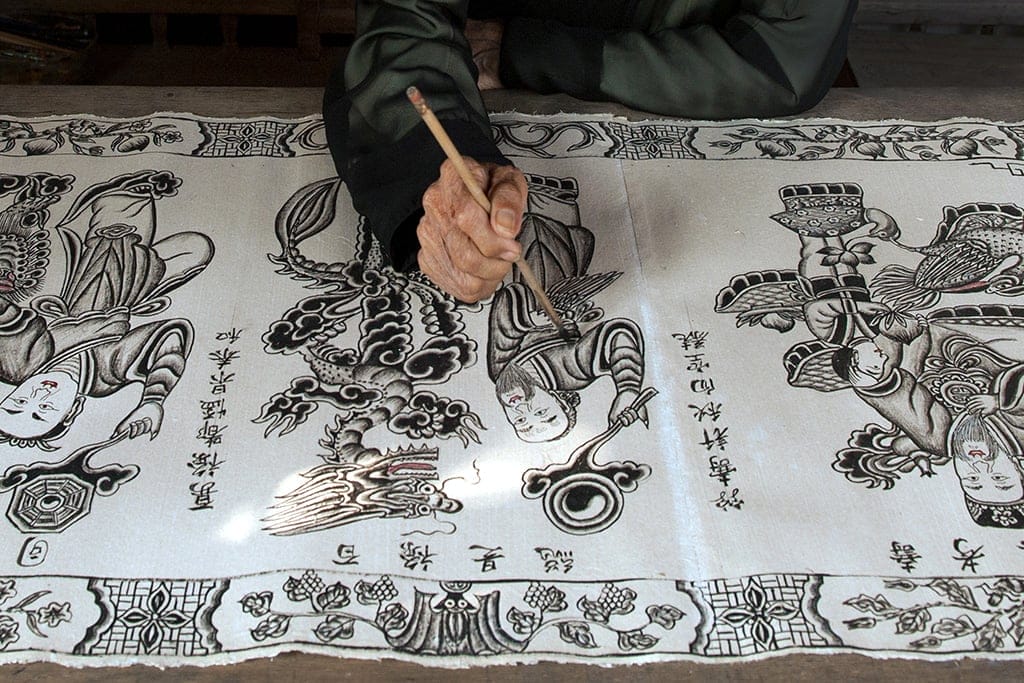
Location:
Dong Ho painting village, formally called Mai village, is located in Song Ho commune, Thuan Thanh District, Bac Ninh province standing along the southern bank of Duong River Dyke, 30 km to the East of Hanoi.
How to get there:
From Hanoi, it takes just a little over an hour to travel here by motorbike, car, or bus. Motorbike and car are most popular vehicles. Just go down National Highway 5 for about 15 kilometers for motorbikes and car drivers. Turn left at Phu Thuy Station, then keep driving for 18 kilometers until you reach Thuan Thanh district. Go all the way to Ho street and turn left at the second dike wharf. There you will find a signpost to Dong Ho folk painting village
But the cheapest way is to take the 204 bus (VND 22,000) to Thuan Thanh, Bac Ninh, then call a taxi or take a motorbike to Dong Ho village.
Entrance Fee:
Free of charge. To bring the pictures home, you will need to pay a fee of 50,000 – 500,000 VND/item depend on their sizes.
Main Products:
Vibrant and symbolic Dong Ho folk paintings.
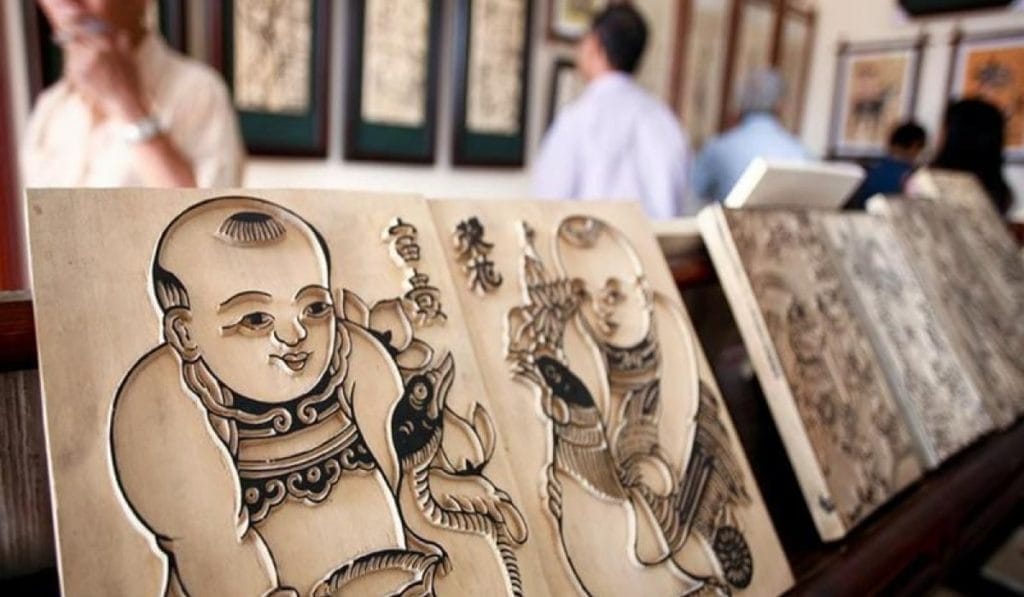
Activities:
- Take photos: A photo with the unique paintings handcrafted by artisans will look truly artistic!
- Learn how to make Dong Ho Paintings: Guided by Dong Ho artisans, this will help you understand the distinctiveness of this traditional craft and create a beautiful painting of your own.
- Participate in an exciting Dong Ho painting exhibition: At the exhibition, you will get to admire over 100 artifacts and paintings from different periods of the village.
- Witness the Dong Ho Folk Painting Festival: The festival takes place annually from the 14th to the 16th day of the 3rd lunar month. It is a chance for you to enjoy unique folk paintings in a lively festive atmosphere.
- Meet outstanding artisans of Dong Ho Village: Engage in conversations with the artisans here to learn about the history and intriguing stories behind Dong Ho art.
3. Van Phuc Silk Village:
For a long period of time, silk was considered as extremely precious handwork which was only used to tailor Royal members’ and aristocrats’ dress. The special beauty of Van Phuc or Ha Dong silk was inspiration for many Vietnamese poems, songs and movies. Van Phuc silk has been known for its smooth, light weight, and elegant appearance.
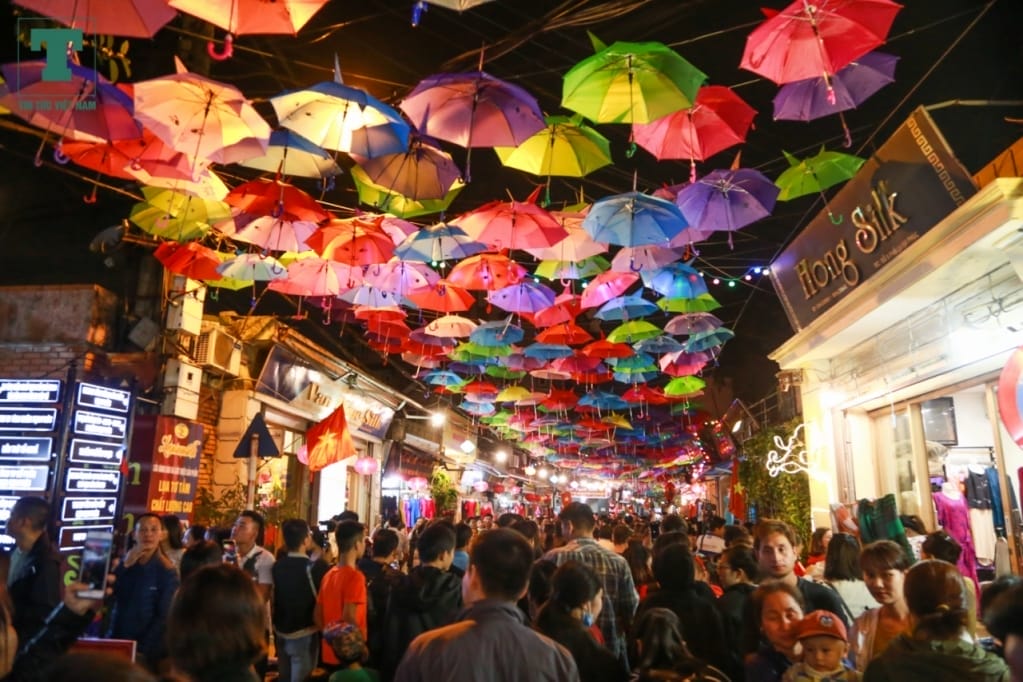
Location:
Also known as Ha Dong Silk Village, Van Phuc Silk Village is located in Van Phuc Ward, Ha Dong District, Hanoi, on the bank of the gentle Nhue River, more than 10 kilometers away from the city center. To reach the village, you can travel by motorbike with an easy-to-follow route: Nguyen Trai – Le Van Luong – To Huu.
How to get there:
A short ride from Hanoi, taking approximately 20 minutes by taxi or motorbike. Tourists can visit Van Phuc on their owns by car, motorbike, or catch the local bus 02, 21 then walk 500m to reach the village.
Tourists can also travel south-west out of Hanoi center on Nguyen Trai road until reach the border of Ha Dong district, then turn right and drive about 3km to reach the village.
Entrance Fee:
It is free to enter the village, you will only need to pay the parking fee, be noted that some workshops may charge a small fee.
Main Products:
Renowned for its high-quality silk products. The most famous products are Van Silk and Satin Silk.
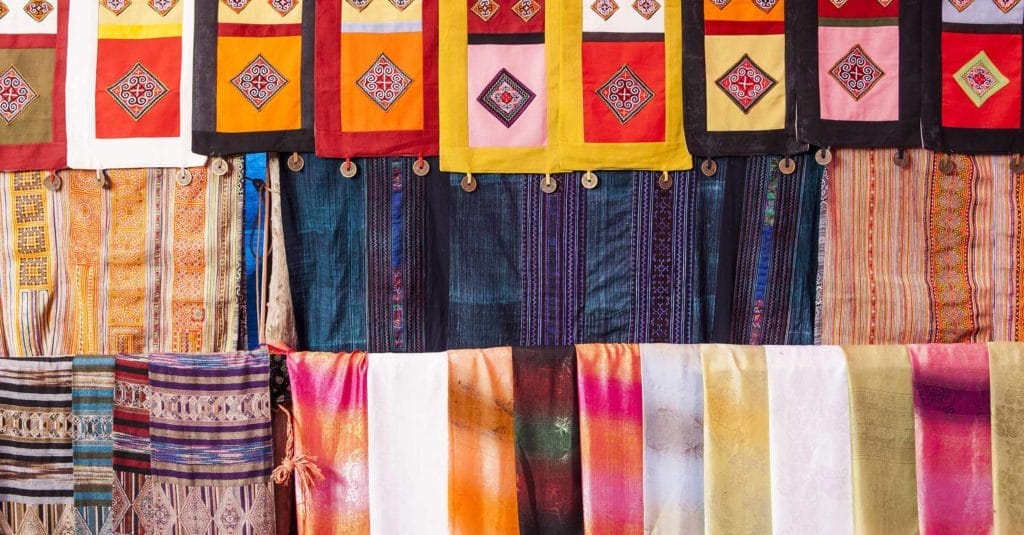
Activities:
- Participate in a silk weaving workshop to understand the delicate process of silk production.
- Walking under the umbrella road. It is about 100 meters long, covered with colorful hanging umbrellas, thus making it the ideal check-in place for young people. At night, when the lights are on, the road looks even more magical.
- Explore local markets for a wide array of silk products and textiles.
4. Duong Lam Ancient Village:
Duong Lam Ancient Village is an old village that still retains the architectural and artistic features of an ancient Vietnamese village. This place is not only favored by tourists who love culture and history but also well-liked by many young people who are fond of exploration.

Location:
Situated around 45 kilometers west of Hanoi.
How to get there:
- Motorbike/ Car: Traveling by motorbike will give you the freedom to adjust your itinerary and explore around. If you choose this means, you can follow one of the two routes: Go to Thang Long Boulevard, turn right at Hoa Lac Junction, follow National Road 21 through Son Loc to the intersection with National Road 32. There, you will see a signpost pointing you in the direction of Duong Lam. Take National Road 32 to Son Tay Town. At the intersection with National Road 21, turn left to reach the village.
- By bus: Buses number 20A, 70, 71, and 77 all pass by Duong Lam Ancient Village. After getting off at Son Tay bus stop, you can take a motorbike taxi or taxi to reach the village.
Entrance Fee:
Currently, the ticket price to visit Duong Lam Ancient Village is only VND20,000 for adults and VND10,000 for children. The fee for motorbike parking is VND10,000/vehicle.
Main Products:
Known for its unique laterite brick buildings and ancient houses. Duong Lam Ancient Village is an ideal choice for tourists who are looking to explore the architecture of Vietnamese traditional houses and see the way of life of the rural people in Hanoi.
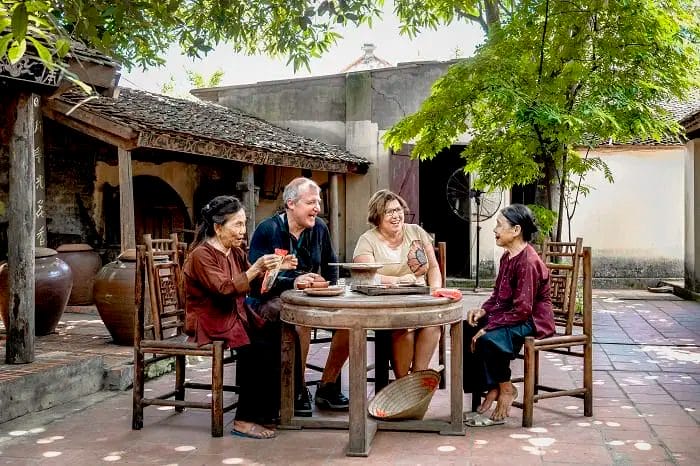
Activities:
- Take a leisurely stroll through the ancient village and explore its historical landmarks.
- Engage with local artisans in traditional crafts, such as making rice cakes or rice wine.
- Seeing banyan trees, wells, communal courtyards, pagodas and temples, winding village roads, old wooden houses, red-brick walls, etc…
5. Quang Phu Cau Incense Village:
For generations, the Vietnamese people have been associated with the craft of making incense sticks, and many traditional craft villages in Hanoi have been preserved by skilled craftsmen. Quang Phu Cau Incence Village is one such village that specializes in making incense and has been standing the test of time as a unique cultural beauty of Hanoi capital’s countryside.

Location:
Located in Ung Hoa district, 35km from downtown Hanoi
Main Products:
Well known for its century-old craft of making incense.
How to get there:
- Motorbike/ Car: From the Hanoi capital downtown, visitors can travel on the national highway 21B or the provincial highway 429 to go to Quang Phu Cau village. In addition, Cat Linh – Ha Dong metro line is also a good choice for visitors to reach the village. From the final station of the metro line at Yen Nghia, visitors travel on bus No.91 to Quang Phu Cau.
- By bus:The most affordable and convenient way to get to Quang Phu Cau village from Hanoi is by taking the bus, line 91. The bus ride takes about 45 minutes to an hour (depending on where you board).
- By motorbike:If you’re feeling adventurous, you can rent a motorbike to Hanoi and make your way to Quang Phu Cau village on your own. This option gives you more freedom and flexibility to explore the area at your own pace, but it also comes with some risks due to the chaotic traffic in Hanoi. Also note that in Vietnam foreigners are not insured when driving a +50CC motorbike.
- By tour:Another option is to book a tour to Quang Phu Cau Village which includes transportation and a guide. This option is convenient and that way you can be sure you will get the most out of your experience in Quang Phu Cau incense village, where (it needs to be said again) most locals speak absolutely no English.
Entrance Fee:
Fortunately, you don’t have to pay anything to visit Quang Phu Cau. However, there may be a small fee if you enter private property, for example, to take photos.
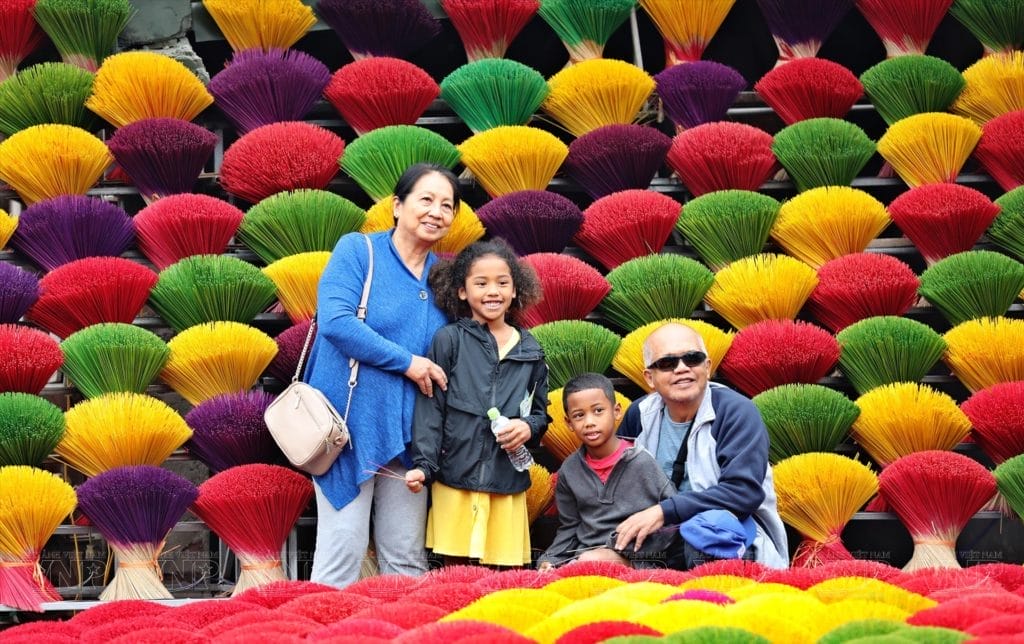
Activities:
- Getting to know the incense-making process.
- Taking check-in photos with vibrant “flowers” of incense.
- Walking along the village & feeling the peaceful atmosphere of Northern Vietnam’s countryside.






